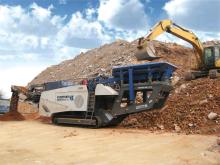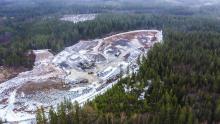
Herdade de Benafessim quarry, owned by Mota Engil in Portugal, has used Metso O-Series crusher wear parts in its tertiary crushing station since 2022 with strong results.
Located in the district of Évora, municipality of Montemor-o-Novo, the Herdade de Benafessim quarry has operated since 1994. One of the 11 quarries of the major Portuguese construction group Mota Engil, the quarry produces aggregates mainly for the internal consumption of the construction group but also for some other, smaller customers.
Being a large international construction group, Mota Engil operates in 23 countries spanning Europe, Africa and Latin America. The group is among Europe's 25 largest construction companies, with holdings in more than 200 companies. Mota Engil has been involved in numerous major infrastructure projects in Portugal, including one of the largest bridges in the world, Vasco de Gama, which rises 150m above the River Tagus in Lisbon and is more than 17km long.
The Herdade de Benafessim quarry processes granite for various needs, including concrete and asphalt production for civil engineering and road construction, and its annual production capacity is more than 600,000 tons. Mota Engil was awarded a significant project in consort with a partner to build the final leg of the Southern International rail corridor between the town of Évora and the Spanish border. The quarry is producing 31.5-50 mm fraction railway ballast and 0-32 mm sub-ballast for the railway project.
The crushing process in Herdade de Benafessim has three crushing stages. The secondary stage has a Nordberg HP400, and the third stage has a Nordberg HP4, which the quarry obtained in 2022. They also have a crushing line extension with a Barmac impactor to produce sand and asphalt and concrete fines.
The HP4 operates in a closed-side setting (CSS) and produces two fractions, 6-14mm and the final size, 14-20 mm. The Nordberg HP4 replaced the earlier HP300 in the tertiary stage.
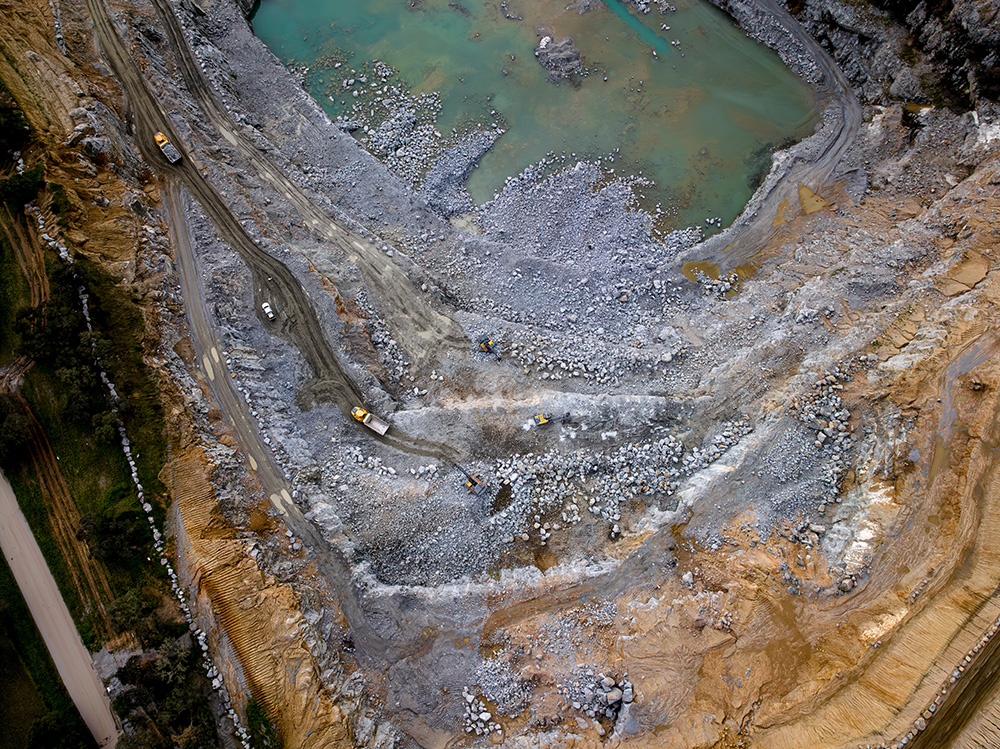
To lower its cost per tonne, the quarry started to use Metso’s O-Series wear parts in the HP300, and based on its good experience with their use, they have extended the same application on the HP400 in the secondary stage. In 2022 they invested in a new machine and replaced the HP300 with a new HP4. The plan is to continue to use the O-Series wears in the HP4 in tertiary, too, as soon as its warranty period is over. When changing from premium wear parts to the more affordable O-Series range in their tertiary crushing stage, their production capacity experienced a reduction of approximately 10%, but the cost savings are outplaying the production decrease and making their operations more cost-effective.
The quarry has its own modern rock laboratory to analyse the material for the best crushing results. Over the course of time, the quarry has received many quality certifications, including SO 9001, ISO 14001 and OHSAS 18001 and all their products are now CE-marked.
With 20 years left on its licence, the quarry has no plans to slow down. A new bank in the quarry face is in planning to be opened. With that, the quarry plans to move its crushers to a new location, update its equipment and modernise automation to maintain its momentum.
EvoQuip has launched the Bison 340—the newest and largest addition to the Terex Materials Processing business brand's Bison jaw crusher range.
The 34-tonne crusher has a 1000mm x 600mm jaw chamber opening and boasts an impressive output potential of 280tph, depending on application.
A high-performance primary jaw crusher, the EvoQuip Bison 340 is designed for operators in quarrying, demolition, recycling, and mining applications. It features track mobility for a quick setup time and hydraulic crusher setting adjustments for total control of product size. The hydrostatic drive, which is included as standard, allows the crusher to be run in reverse. This is particularly useful for removing blockages from the chamber or crushing in a sticky application like asphalt.
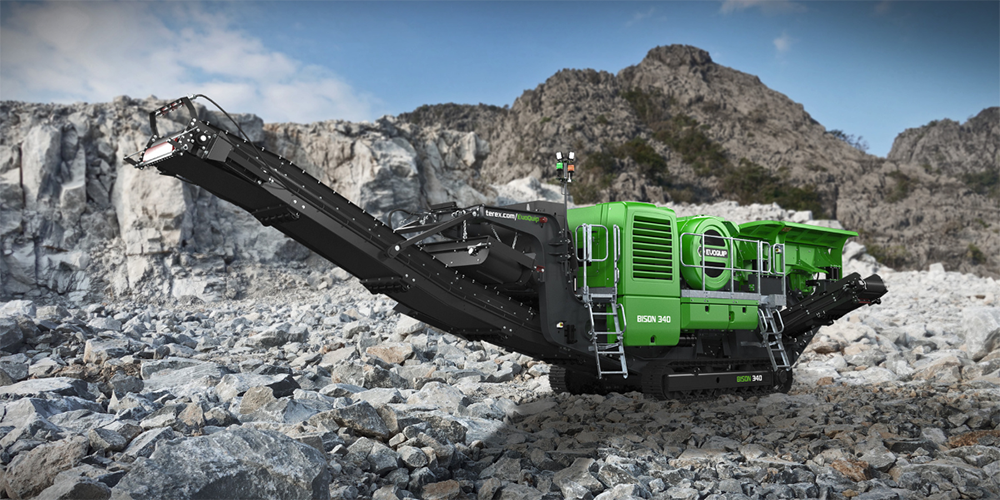
Andrew Armstrong, EvoQuip product manager, said: "As with the entire EvoQuip range, the Bison 340 is compact and easily transported from site to site. The Bison 340 is at home in hard rock quarry applications, as well as recycling applications. It also has an efficient drive system and low engine RPM to enable it to be run with low fuel consumption."
All Bison jaw crushers come with the T-Link telemetry system fitted as standard, providing customers with real-time information on the performance of their machine, leading to effective machine management and maximised uptime. This data can be accessed through a tablet or smartphone and provides comprehensive information on the location, fuel consumption, tonnages, wear ratings, operating hours, and much more.
Kleemann has highlighted how the company uses three different drive concepts that offer the best solution depending on the crushing and screening tasks. Although electric drives score very well on CO2 footprint, a fuel-saving diesel drive is the better solution in some situations. E-DRIVE, D-DRIVE and H-DRIVE represent the variants diesel-electric, diesel-direct and diesel-hydraulic.
The decision on the most efficient solution depends on many factors: For example, whether a power-supply option is available on site, whether the machines are used in an urban environment or which local environmental regulations apply.
The E-DRIVE concept offers two options: Diesel fuel or all-electric. All-electric operation is environmentally friendly: there are no CO2 emissions on site. A good power infrastructure is a precondition for this, often available in quarries or larger recycling yards. A diesel-electric work option is available if the power supply is insufficient or there isn’t one available, for example, if the complete plant in the quarry is to be moved along the rock face. Power is then supplied from a long cable, which is often too complex or may not even be possible. In this case, power comes from the fuel-efficient diesel engine. The crusher and all conveyor belts are still electrically driven by a generator. Depending on the local situation, the E-DRIVE concept offers high flexibility.
The diesel-direct D-DRIVE provides power directly from the engine to the crusher. In the last few years, it was possible to reduce consumption, for example, through the load-dependent fan drive of the new EVO2 Generation. Concerning the degree of efficiency, the diesel-direct drive has the edge and fuel consumption is significantly lower. Thanks to their compact size and well-thought-out transport options, the machines can be positioned anywhere on the work site. If continuous use of the all-electric drive is not possible, the D-DRIVE is the better, more sustainable choice – whenever flexibility is required. This is the case with demolition and processing work in urban areas and road construction, where the machines have to be moved along as construction progresses.
The screening plants from Kleemann use an effective diesel-hydraulic drive. In this case, hydraulic pumps operate all machine parts such as screen, belts and drive system. The power requirements of the screens are considerably lower than a crusher – fuel consumption during operation is, therefore, more favourable. The optionally available Start-Stop system can reduce consumption even more. With the configuration with Dual Power, Kleemann screening plants have an option for an all-electric power supply. If a mains connection is available, the plant operates on-site free of emissions – for example, in ecologically sensitive areas with strict regulations.
Many factors play a role in the area of sustainability. The energy required for production, transport, storage, sales and disposal are all incorporated into the ecological footprint of the production process. As far as CO2 emissions during operation are concerned, an all-electric plant is, without doubt, the best choice. In other cases, you have to weigh whether supply via an external power source involving high equipment and material costs is more constructive at the end of the day than technology with lower fuel consumption. Ecology can also mean trusting low material usage and high durability.



